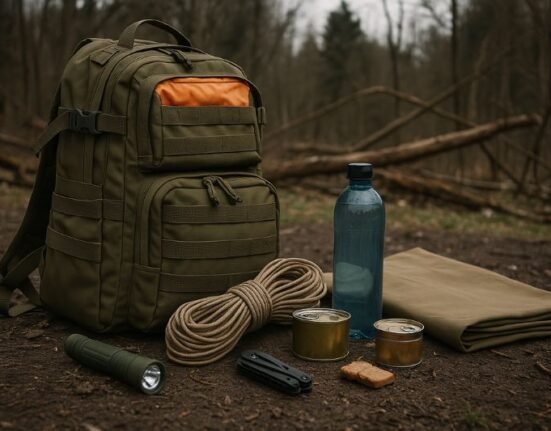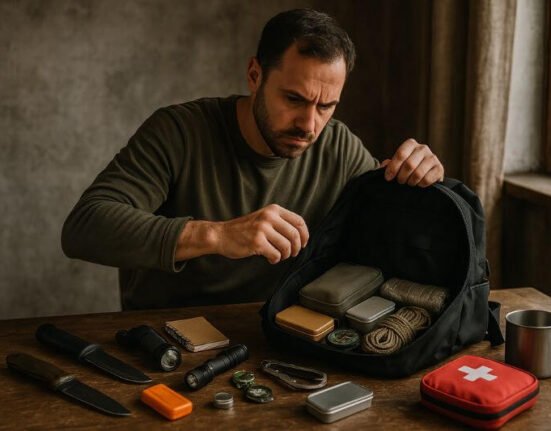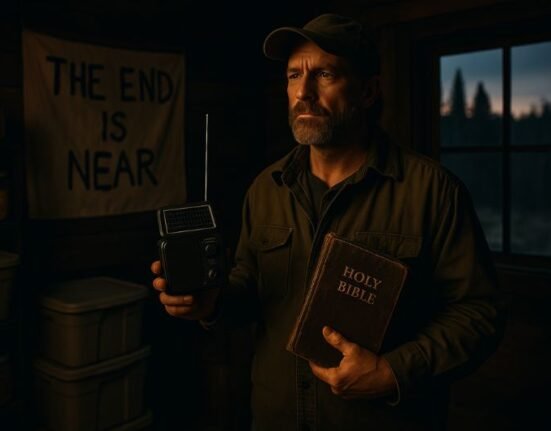Stoicism and survival go hand in hand. In fact, some of the most powerful lessons for modern preppers, off-gridders, and crisis responders come from a philosophy that’s over 2,000 years old.
At its core, Stoicism teaches us to control what we can, accept what we can’t, and act with courage, discipline, and wisdom in the face of adversity. In other words: exactly what survival demands.
Whether you’re navigating societal collapse, natural disaster, or personal catastrophe, Stoicism offers more than comfort—it offers a mindset designed for hardship.
What Is Stoicism, Really?
Before we explore its survival applications, let’s clarify what Stoicism isn’t:
- ❌ It’s not emotional repression
- ❌ It’s not indifference or coldness
- ❌ It’s not about suffering in silence
Stoicism is a practical philosophy rooted in the writings of Marcus Aurelius, Seneca, Epictetus, and others. It’s about training your mind to remain steady when the world around you isn’t.
“You have power over your mind—not outside events. Realize this, and you will find strength.”
— Marcus Aurelius, Meditations
The Stoic doesn’t deny fear. He acknowledges it—and then chooses not to be ruled by it. That’s the difference.
Ancient Stoic Teachings, Modern Survival Wisdom
Stoic principles are surprisingly tactical. Here’s how some of the core ideas translate into survival contexts:
| Stoic Concept | Survival Application |
|---|---|
| Dichotomy of Control | Focus only on what you can influence (your decisions, actions, mindset). Don’t waste energy on what you can’t (the weather, the economy, others’ panic). |
| Premeditatio Malorum | Mentally rehearse disasters before they happen—so you’re never surprised. Visualize the worst, prepare calmly. |
| Voluntary Discomfort | Train your body and mind through hardship now—cold showers, fasting, camping—so real deprivation doesn’t break you. |
| Amor Fati | Love your fate. Accept misfortune not as unfair, but as your path. Work with it, not against it. |
This isn’t just philosophy—it’s mental training.
The Dichotomy of Control in Action
In a crisis, the first instinct is to panic over everything: the collapsing grid, what neighbors are doing, the news feed.
But Stoicism says: Stop. Ask one question.
“Is this within my control?”
- ✅ Can I gather water and secure shelter? Yes.
- ❌ Can I prevent the blackout? No.
- ✅ Can I calm my kids? Yes.
- ❌ Can I fix the economy? No.
When you let go of the noise and focus on the actionable, your anxiety drops—and your efficiency skyrockets. That’s not just peace of mind. It’s operational advantage.
🧭 Practical exercise:
Make a 2-column list: “Things I Can Control” vs “Things I Can’t.” Do it weekly as part of your prepping journal.
Stoicism as a Moral Compass in Chaos
In the previous article, we explored survival philosophy as an ethical framework. Stoicism deepens this by anchoring our actions in virtue.
“If it is not right, do not do it. If it is not true, do not say it.”
— Marcus Aurelius
Even in collapse, the Stoic remains:
- Just — Fair to others even when it’s hard
- Courageous — Acts despite fear, not without it
- Temperate — Controls urges (anger, hunger, fear)
- Wise — Reflects before reacting
In other words: the Stoic survives without losing his soul.
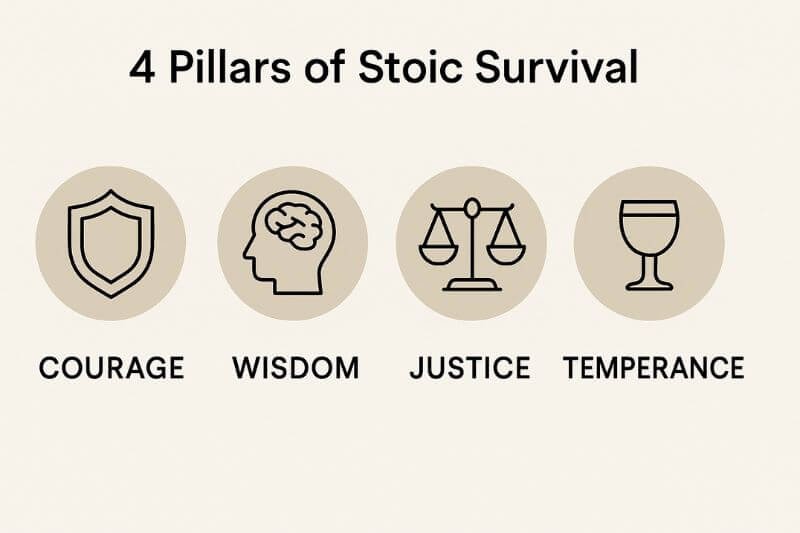
Training for Survival the Stoic Way
You don’t become resilient by reading about Stoicism—you become resilient by living it. The ancient Stoics didn’t just write in scrolls; they tested themselves.
In the same way, today’s survivalist must train their body, emotions, and mindset using Stoic exercises adapted to modern life.
Let’s explore how to practice Stoicism for survival—not as theory, but as a daily discipline.
Voluntary Discomfort: Building Toughness Before Crisis Hits
“Set aside a certain number of days, during which you shall be content with the scantiest and cheapest fare… and ask yourself, ‘Is this the condition that I feared?’”
— Seneca
This Stoic technique, known as voluntary discomfort, is about simulating hardship before it’s forced upon you.
Try these modern applications:
- Sleep outside with minimal shelter once a month
- Eat rice and beans for three days straight
- Take cold showers during winter
- Go without your phone for 24 hours
- Hike long distances carrying your bug-out bag
These aren’t gimmicks. They train your nervous system to tolerate discomfort—and give you proof that you can endure more than you think.
🧭 Action tip: Schedule one voluntary hardship each week. Keep a log of how your mind and body respond.
Negative Visualization: Prepare for the Worst with Peace
Premeditatio Malorum—“the premeditation of evils”—is one of Stoicism’s most powerful tools for survival.
It means imagining the worst-case scenario—not to dwell on it, but to prepare.
Use this weekly reflection:
- What if I lose access to clean water?
- What if a loved one gets injured during evacuation?
- What if I must live without electricity for weeks?
Then ask: What would I do?
If the answer is “I’m not sure,” that’s your cue to train, stock, or rethink your plan.
Far from pessimism, this practice builds confidence. You’ve faced the horror in your mind—and now, it can’t control you.
Stoic Journaling: A Mental Survival Log
Journaling wasn’t optional for Stoics. Epictetus, Marcus Aurelius, and Seneca all wrote daily to refine their judgment.
A Stoic prepper’s journal can include:
- One fear you confronted today
- One thing you controlled vs one you released
- One way you practiced courage, discipline, or wisdom
- A lesson from failure
This habit not only clears your mind—it sharpens it. And when panic hits, the trained thinker has the edge.
🧭 Try this format each night:
“I faced ___ today. I responded with ___. I would improve by ___.”
Stoic Leadership in a Group Setting
Survival rarely happens in isolation. Whether you’re prepping with family or leading a crisis team, stoicism makes you a better leader.
A Stoic leader:
- Keeps calm during group panic
- Doesn’t blame or shame
- Listens more than they speak
- Acts decisively with moral clarity
- Models behavior instead of preaching
“Waste no more time arguing what a good man should be. Be one.”
— Marcus Aurelius
When your group sees your steadiness under stress, they follow your lead—consciously or not. In chaos, your mindset becomes contagious.
From Philosophy to Fieldwork: Stoic Prepper Routines
Here’s how a prepper can structure their week with Stoic principles:
| Day | Stoic Focus | Practical Exercise |
|---|---|---|
| Monday | Control | List 5 things you can’t change—then drop them from your worry list |
| Tuesday | Hardship | Practice voluntary discomfort (fast, cold exposure, etc.) |
| Wednesday | Virtue | Observe your reactions and identify a moment of pride or shame |
| Thursday | Planning | Do a “worst-case drill” and plan your response |
| Friday | Journaling | Reflect on what you learned this week under pressure |
| Weekend | Nature & Stillness | Disconnect. Spend time in silence or outdoors, regrounding yourself |
🧠 Consistency builds moral muscle. The more you live it, the less likely you are to break when it matters most.
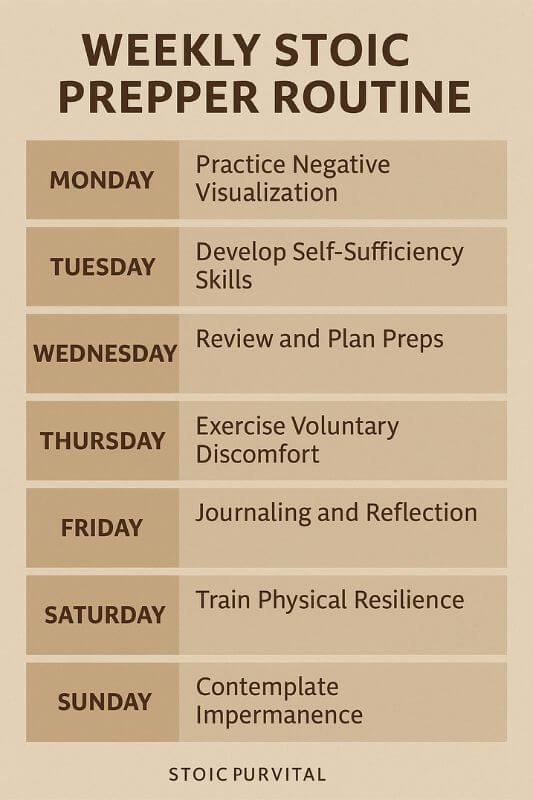
When Stoicism Is Tested: Real-World Survival Applications
Stoicism shines brightest not in comfort—but in catastrophe.
It’s easy to quote Marcus Aurelius from your living room. It’s much harder when the grid is down, your child is crying, and you haven’t slept in 36 hours.
But that’s precisely when Stoicism becomes your lifeline.
Case Study: Stoic Response in Disaster
Take the example of James Hatch, a former Navy SEAL who survived intense combat missions and later built his life around Stoic principles.
In a podcast interview, he explained how Stoic thinking helped him:
- Calm his panic under gunfire
- Make ethical decisions while wounded
- Rebuild mentally after trauma
“Stoicism didn’t make the pain go away. But it gave me something solid to hold onto when everything else collapsed.”
You don’t have to be in combat to relate.
Imagine a wildfire. You have 10 minutes to evacuate. Panic screams, “Grab everything!”
But Stoicism reminds you: Act, not react. Control what you can. Accept the rest.
🧭 The Stoic doesn’t freeze—they move with purpose.
The Stoic Prepper Mindset in Long-Term Collapse
Let’s imagine a slow-burn collapse—economic depression, food shortages, civil unrest. The Stoic prepper isn’t just the one with the best pantry.
They’re the ones who:
- Don’t panic-buy
- Help organize neighbors
- Meditate every morning to stay centered
- Don’t waste energy on blame or doomscrolling
- Maintain dignity even when society unravels
Why? Because they’ve trained not just for survival, but for character.
“If you are distressed by anything external, the pain is not due to the thing itself, but to your estimate of it.”
— Marcus Aurelius
That’s what gives them power when others feel helpless.
Conclusion: Live Like the Crisis Has Already Begun
Stoicism is not a philosophy for armchair intellectuals.
It is a toolkit for surviving reality—and staying human through it all.
So don’t wait for collapse to hit your doorstep.
Train now.
- Journal tonight.
- Sleep rough this weekend.
- Visualize your worst fear, and sit with it.
Because in the end, stoicism and survival aren’t separate paths.
They are two names for the same road:
To face hardship with grace, to lead with courage, and to act in chaos with clear purpose.
❓ FAQ – Stoicism in Survival Scenarios
Q: Isn’t Stoicism too passive for real emergencies?
Not at all. Stoicism isn’t passive—it’s strategic calm. It teaches focus, restraint, and decisive action, not inaction.
Q: Can Stoicism really help with emotional trauma from disaster?
Yes. Many veterans, survivors, and first responders use Stoic principles for healing. Journaling, reflection, and negative visualization all promote recovery.
Q: Is Stoicism compatible with religion or spirituality?
Absolutely. Stoicism is a framework, not a belief system. It complements many faiths by encouraging virtue, humility, and perspective.
Q: How do I teach Stoicism to my kids or family?
Model it. Let them see you remain calm when plans fall apart. Share quotes. Use questions like: “Is this in our control?”
Q: What book should I start with to learn more?
- Meditations by Marcus Aurelius (for depth)
- Letters to Lucilius by Seneca (for ethics)
- The Daily Stoic by Ryan Holiday (for daily practice)










